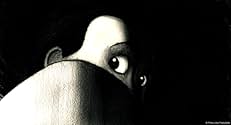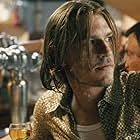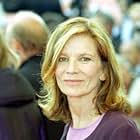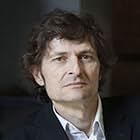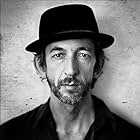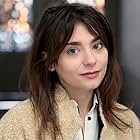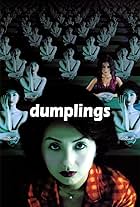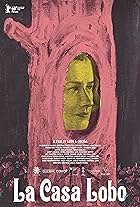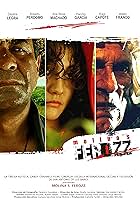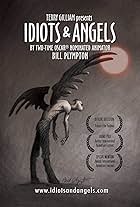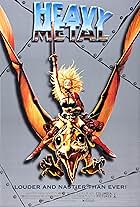IMDb RATING
6.6/10
3.3K
YOUR RATING
Several scary black-and-white animated segments in different styles appeal to our fear(s) of the dark.Several scary black-and-white animated segments in different styles appeal to our fear(s) of the dark.Several scary black-and-white animated segments in different styles appeal to our fear(s) of the dark.
- Awards
- 1 win & 5 nominations total
Aure Atika
- Laura
- (voice)
Guillaume Depardieu
- Eric
- (voice)
Nicole Garcia
- Narrator
- (voice)
François Créton
- The teacher
- (voice)
- (as François Creton)
Christian Hecq
- The doctor
- (voice)
- …
Louisa Pili
- Sumako
- (voice)
Brigitte Sy
- Eric's mother
- (voice)
Storyline
Featured review
After seeing Fear(s) of The Dark I think I can safely say I was as, or more, affected than I have ever been after watching a film. Not since the horrific denouement of Haneke's original Funny Games do I think I have even come close to being as physically shook up as I was after seeing this film. A collaboration between six graphic artists and animators, I suppose if it must be distilled into the crudest possible collision of reference points it could be summarised as Stephen King meets Waking Life (Richard Linklater's 2001 film composed of rotoscope animation vignettes) yet that doesn't come anywhere close.
The artists who have visualised nightmares for this project are Philadelphia native Charles Burns, ubiquitous to graphic novel fans due to his masterly disturbing book Black Hole; former Liquid Liquid bassist Richard McGuire; Belgian resident Marie Caillou; Christian Hinckler (better known by his pseudonym Blutch), and Italian Lorenzo Mattotti. Interspersing these animated tales are kaleidoscopic dancing patterns which are, through their hypnotic abstractions, perhaps the most visually mesmerising sequences in the whole film. These patterns are set to the vacuous middle-class fears and worries of a bourgeois woman, and the insubstantiality of her worries sets a theme which extends throughout the film. None of the fears represented in any of the narrative threads are viable. They are all tales of terror which one wouldn't have been surprised to find lurking in a battered Goosebumps paperback in the late nineties. This doesn't matter, though, because the film's power lies in its incredibly paced orchestrations of image and sound.
After a joyously Gothic title sequence in which the film's name flashes on the screen at least five times (in a barrage of words reminiscent of Godard at his most poetically despotic) we are presented with an introduction to Blutch's storyline, which extends throughout the film. A hellish figure dressed in the clothes of a 18th century dandy roams a barren landscape with a pack of ferocious canines, hunting down unsuspecting victims and then proceeding to violently rip them apart (the last of which is a remarkably gory sequence). Ironically, considering the content of these scenes, Blutch's animation style is most reminiscent of either Raymond Briggs (In the constant shimmering of his charcoal textures) or the Walt Disney studios house style (In the fluidity of his characters' movements).
Charles Burns and Lorenzo Mattotti present two sequences which are most reminiscent of scary bed-time stories, both being narrated in first-person. Visually, though, they couldn't be more different. Charles Burns' is, as you might imagine, the most like a moving graphic novel. The art is unmistakeably his, very clean-cut black lines without any grey, and the pictures tell the story of a conscientious student who embarks on a love affair with a girl which descends into an insectoid hell in a methodical, coherent style. Mattotti, on the other hand, tells the story of an eerie beast terrorising a small pastoral community in a free-and-easy sketchy style, with images that swim in and out of view like a dream.
This is not the best representation of a bad dream within the film, though. That accolade goes to Marie Caillou, who presents to us an Oriental phantasm. A macabre inversion of a Studio Ghibli fantasy which gets more surreal as it proceeds, a young girl is tormented by dangers both real and imaginary. Not since The Mystery Man talked to Bill Pullman at the party in Lost Highway has a nightmare been so well orated on screen and it had a large majority of the audience locked in a collective terror.
While Caillou's segment had an undeniable effect on the viewers, the last sequence, by Richard McGuire, is perhaps the most powerful of them all. Employing nothing but block black-and-white shapes to tell the story of a man who is haunted in a house by a mysterious woman, for the most part of his segment he eschews all non-diegetic music. The audience is thereby made extremely sensitive to every single movement made by the objects on screen and so the slightest motion, such as a hat-box dropping to the floor, causes the heart to skip a beat.
The artists who have visualised nightmares for this project are Philadelphia native Charles Burns, ubiquitous to graphic novel fans due to his masterly disturbing book Black Hole; former Liquid Liquid bassist Richard McGuire; Belgian resident Marie Caillou; Christian Hinckler (better known by his pseudonym Blutch), and Italian Lorenzo Mattotti. Interspersing these animated tales are kaleidoscopic dancing patterns which are, through their hypnotic abstractions, perhaps the most visually mesmerising sequences in the whole film. These patterns are set to the vacuous middle-class fears and worries of a bourgeois woman, and the insubstantiality of her worries sets a theme which extends throughout the film. None of the fears represented in any of the narrative threads are viable. They are all tales of terror which one wouldn't have been surprised to find lurking in a battered Goosebumps paperback in the late nineties. This doesn't matter, though, because the film's power lies in its incredibly paced orchestrations of image and sound.
After a joyously Gothic title sequence in which the film's name flashes on the screen at least five times (in a barrage of words reminiscent of Godard at his most poetically despotic) we are presented with an introduction to Blutch's storyline, which extends throughout the film. A hellish figure dressed in the clothes of a 18th century dandy roams a barren landscape with a pack of ferocious canines, hunting down unsuspecting victims and then proceeding to violently rip them apart (the last of which is a remarkably gory sequence). Ironically, considering the content of these scenes, Blutch's animation style is most reminiscent of either Raymond Briggs (In the constant shimmering of his charcoal textures) or the Walt Disney studios house style (In the fluidity of his characters' movements).
Charles Burns and Lorenzo Mattotti present two sequences which are most reminiscent of scary bed-time stories, both being narrated in first-person. Visually, though, they couldn't be more different. Charles Burns' is, as you might imagine, the most like a moving graphic novel. The art is unmistakeably his, very clean-cut black lines without any grey, and the pictures tell the story of a conscientious student who embarks on a love affair with a girl which descends into an insectoid hell in a methodical, coherent style. Mattotti, on the other hand, tells the story of an eerie beast terrorising a small pastoral community in a free-and-easy sketchy style, with images that swim in and out of view like a dream.
This is not the best representation of a bad dream within the film, though. That accolade goes to Marie Caillou, who presents to us an Oriental phantasm. A macabre inversion of a Studio Ghibli fantasy which gets more surreal as it proceeds, a young girl is tormented by dangers both real and imaginary. Not since The Mystery Man talked to Bill Pullman at the party in Lost Highway has a nightmare been so well orated on screen and it had a large majority of the audience locked in a collective terror.
While Caillou's segment had an undeniable effect on the viewers, the last sequence, by Richard McGuire, is perhaps the most powerful of them all. Employing nothing but block black-and-white shapes to tell the story of a man who is haunted in a house by a mysterious woman, for the most part of his segment he eschews all non-diegetic music. The audience is thereby made extremely sensitive to every single movement made by the objects on screen and so the slightest motion, such as a hat-box dropping to the floor, causes the heart to skip a beat.
- newhealthrock
- Nov 19, 2008
- Permalink
- How long is Fear(s) of the Dark?Powered by Alexa
Details
- Release date
- Countries of origin
- Language
- Also known as
- Fear(s) of the Dark
- Production companies
- See more company credits at IMDbPro
Box office
- Gross US & Canada
- $77,876
- Opening weekend US & Canada
- $6,103
- Oct 26, 2008
- Gross worldwide
- $450,813
- Runtime1 hour 23 minutes
- Color
- Sound mix
- Aspect ratio
- 1.85 : 1
Contribute to this page
Suggest an edit or add missing content








